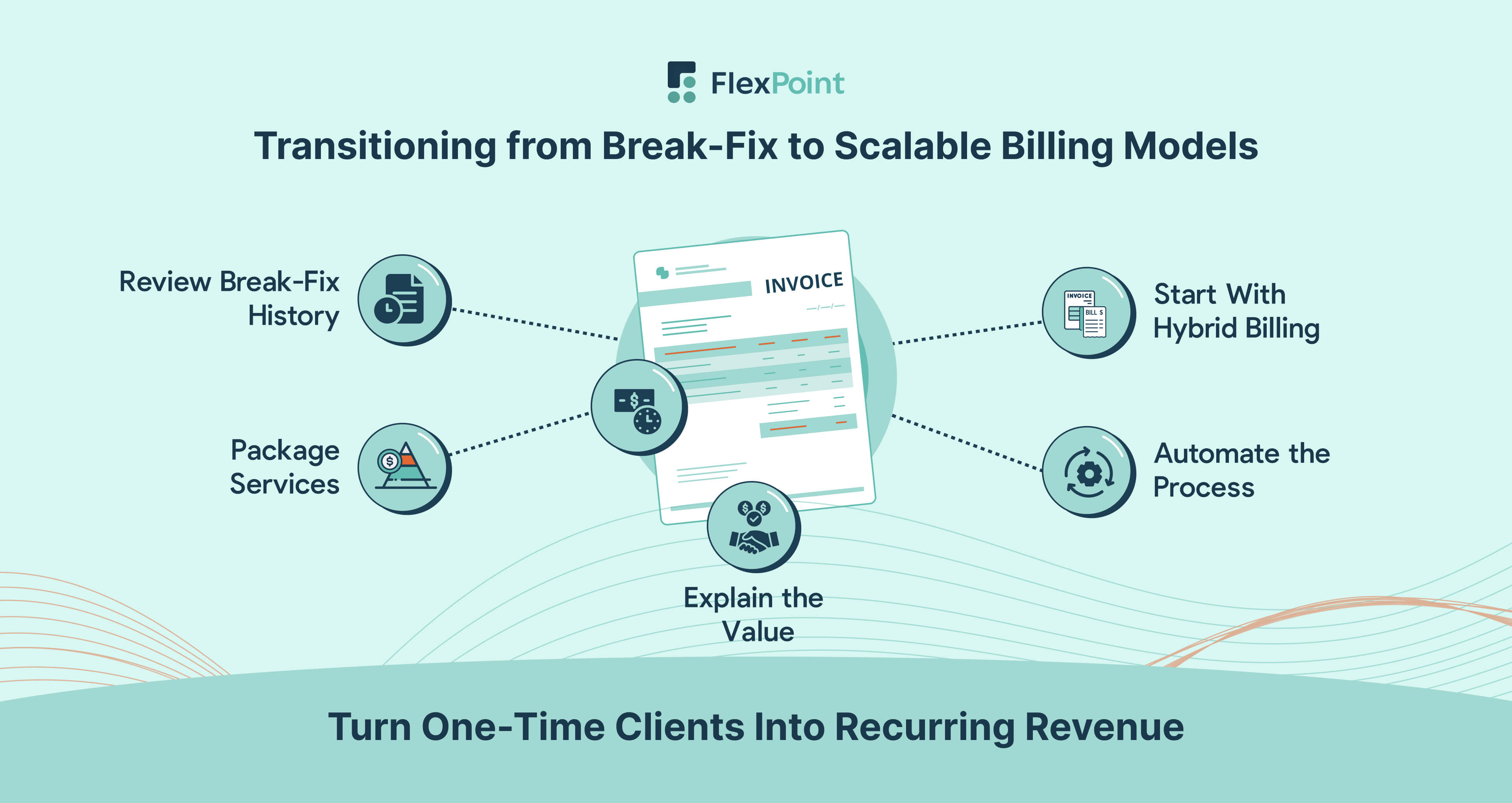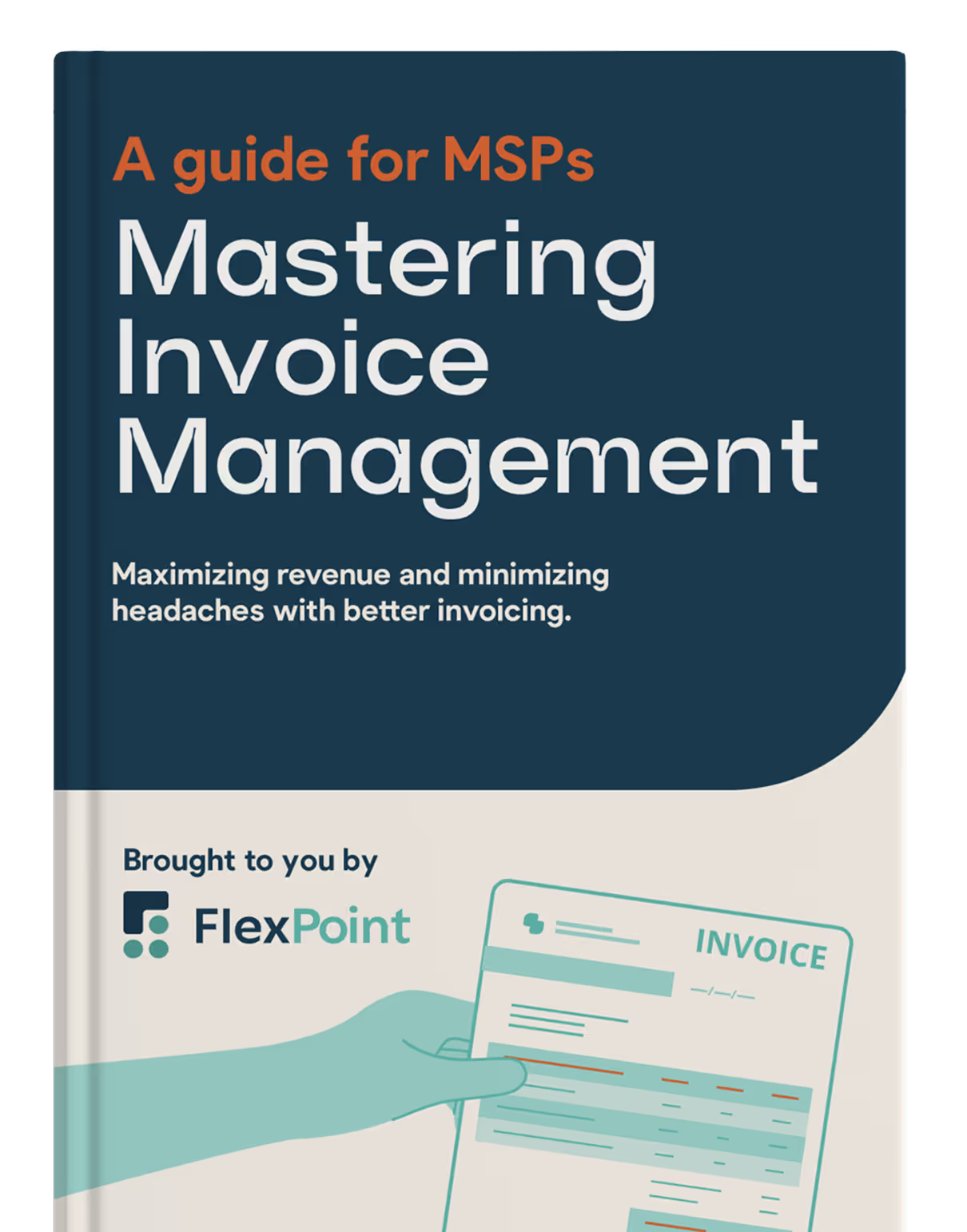MSP Hourly Break-Fix Pricing Explained: When It Works — and When It Doesn’t

Hourly break-fix pricing was once the standard for many managed service providers (MSPs). With this billing model, an MSP provides support only when an issue arises and bills the client based on the time spent resolving the issue. It’s simple to understand and doesn’t require long-term contracts or commitments.
However, this billing model may no longer align with an MSP’s goals.
The managed services model has become the industry standard. Recurring revenue, proactive monitoring, and long-term relationships are often more sustainable and profitable.
Break-fix billing, in contrast, can create revenue uncertainty and lead to reactive, crisis-driven operations.
Still, hourly pricing isn’t entirely obsolete. There are situations where it can make sense. This includes short-term projects, emergency support, or clients who aren’t ready for a full-service agreement.
In this article, we explain how hourly break-fix pricing works, when it’s appropriate, and where it falls short. We’ll also provide guidance on transitioning to more scalable billing strategies.
Throughout, we’ll highlight how MSP-specific payment automation software gives MSPs the tools to manage hourly, hybrid, and recurring payment models with ease, helping them maintain flexibility while improving financial predictability.
{{toc}}
What Is Hourly Break-Fix Pricing for MSPs?
Hourly break-fix pricing is a pay-as-you-go model. MSPs bill clients only when services are used, typically on a per-hour or per-incident basis.
There are no contracts or recurring fees. The client contacts the MSP when something breaks, and the MSP responds, fixes it, and sends an invoice.
This model often appeals to small businesses that want to avoid upfront costs. For example, if a server crashes or a workstation needs troubleshooting, the MSP might charge $175–$275 per hour, sometimes with a one-hour minimum.
Break-fix engagements can also involve flat fees for specific tasks, such as virus removal or system setup and configuration. However, the core principle is the same: billing for time and materials after a problem occurs.
MSPs may also sell prepaid blocks of time or charge different rates based on urgency or time of day. After-hours support and onsite visits usually come with premium pricing.
While this model once defined MSP service delivery, many providers now use it sparingly. It works best for one-off projects, remote clients, or entry-level relationships.
FlexPoint supports hourly billing through integrated time tracking and automated invoicing, making it easier to manage break-fix work alongside other billing structures.
{{ebook-cta}}
Pros and Cons of the Hourly Break-Fix Model

Break-fix pricing has several advantages, particularly for newer MSPs or projects with short-term work requirements.
However, it also creates long-term challenges that can limit profitability and growth.
Let’s look at both advantages and disadvantages of the hourly break-fix billing model for MSPs.
The Pros of Hourly Break-Fix Pricing
Below are four tangible benefits of hourly break-fix pricing:
- Simple and transactional: Clients only pay when they need help. There are no contracts, service-level agreements, or recurring costs to consider. For clients with rare issues, this can be a compelling option.
- Lower barrier for new clients: Break-fix allows clients to try your services without a commitment. It’s a low-risk way to build trust before offering a managed services agreement.
- Project-friendly: Hourly billing is easy to apply to one-time jobs such as office setups, data migrations, or equipment upgrades. You can charge a flat rate or by the hour without bundling it into a long-term plan.
- Opportunity for higher hourly margins: Urgent or after-hours work often commands premium rates. This can result in substantial one-time profits if managed correctly.
The Cons of Hourly Break-Fix Pricing
Some of the potential drawbacks of this billing model include:
- Revenue is unpredictable: There is no guarantee of income from month to month. If no one calls, you earn nothing. This makes staffing and investment decisions difficult.
- Reactive work model: You are only called after something breaks. There’s little room for proactive service or long-term planning, which can result in frustrated clients and technician burnout.
- Limited client retention: Clients who pay per incident often shop around. There’s no long-term agreement keeping them with you. This can lead to higher churn rates and weaker client relationships.
- Misaligned incentives: The client pays when something goes wrong. That dynamic can lead to suspicion or delayed support requests, as clients hesitate to rack up hours.
- No bundled value: Maintenance, monitoring, and cybersecurity are often excluded from break-fix services unless the client explicitly requests them. That leads to recurring issues and larger, avoidable failures.
- Hard to scale: Growth is tied to billable hours. That caps how much you can earn without adding more service technicians. As you expand, the administrative overhead of tracking time and billing manually becomes unsustainable.
When to Use Hourly Break-Fix Pricing…and When to Avoid It
There are specific use cases in which using break-fix pricing is a practical option for MSPs:
- A client isn’t ready to commit. For startups or small businesses with limited IT needs, the break-fix pricing model provides a cost-effective way to access professional help.
- You’re doing project work. One-time jobs – such as moving offices, installing firewalls, or conducting assessments – are a natural fit for hourly billing.
- You’re handling emergencies. After-hours server failures or sudden outages may fall outside a client’s existing plan or be handled on a break-fix basis.
- You’re testing a new relationship. Some MSPs start with hourly support, then propose a recurring plan after showing value.
Conversely, some of the scenarios in which an MSP should avoid hourly break-fix include:
- Clients rely on uptime. Healthcare, finance, and manufacturing businesses typically require proactive support and clear Service Level Agreements (SLAs). Break-fix isn’t designed for that level of urgency or risk.
- You need consistent revenue. Hourly billing can create cash flow volatility when hiring or investing in tools, making predictability crucial.
- You’re responsible for cybersecurity. Security updates, backups, and monitoring can’t wait for something to go wrong. Break-fix doesn’t provide ongoing protection.
- You want to scale. Long-term growth depends on recurring revenue. Relying on billable hours makes that problematic.
Break-fix isn’t inherently bad, but it serves a specific role. Many MSPs use it as an entry point, then shift clients to managed services once the relationship is built.
Transitioning from Break-Fix to Scalable Billing Models

Moving away from break-fix can be challenging. Clients may hesitate to pay monthly for something they think they’ll “rarely need.” However, managed services offer more than just emergency response. MSP services also provide prevention, strategy, and peace of mind.
Here’s how to start the transition:
- Review your break-fix history. Identify which clients call frequently. Look at the number of hours worked, repeat issues, and downtime. This data builds a case for a monthly plan.
- Package your services. Create flat-rate or per-user plans that include remote support, monitoring, patching, and backups. Show clients how this reduces risk and lowers total IT costs.
- Explain the value. Use real examples. “You paid for 12 hours of support last quarter at $150/hour. That’s $1,800. A monthly plan would cost $1,200 and include full coverage.”
- Start with hybrid billing. Some MSPs ease into managed services by offering small retainers or prepaid hour bundles with proactive monitoring. This keeps costs down and introduces clients to recurring billing.
- Automate the process. Switching billing models adds complexity. You need systems that can handle flat fees, track hours, and accommodate changing service tiers.
That’s where a robust MSP Billing Platform, such as FlexPoint, comes in. The platform’s billing engine supports all MSP pricing structures. You can run break-fix and managed contracts side by side, pull in time data from your PSA, and create custom invoices for each client without switching tools.
Alternatively, if you choose to use your PSA or accounting software for invoicing, the bi-directional integration with FlexPoint ensures that all billing data is matched and reconciled simultaneously.
Let’s take the example of Compunet Technologies, a California-based MSP, that transitioned to automated billing using FlexPoint and cut its invoice processing time by 95%, from five hours per month to just 15 minutes.
Previously, billing took more than half a day each month and required manually reviewing logs, tracking down payments, and following up on outstanding invoices.
With FlexPoint, their admin now logs in, reviews auto-generated invoices, and completes the entire billing process in a fraction of the time.
Importantly, Compunet was able to keep its existing billing workflows. FlexPoint integrated with their existing workflows, preserving the familiar structure of their billing system while adding layers of automation, visibility, and payment control.
Compunet’s clients also adopted AutoPay, which tightened up cash flow. Now, most payments arrive within 72 hours, and Compunet can plan vendor payments with confidence.
Today, Compunet invoices faster and has more insight into cash flow, client billing behavior, and financial trends, without sacrificing its internal process. For growing MSPs that want automation without disruption, FlexPoint’s flexibility and support proved to be precisely what Compunet needed.

Scalable pricing isn’t just about generating more revenue, but also about delivering better service. With the right approach, most clients will see the value.
Conclusion: Evolving Beyond Hourly Break-Fix for Long-Term Growth
Break-fix billing has its place, but it’s not a growth model. This pricing model creates inconsistent revenue, discourages proactive service, and limits the depth of client relationships. If you rely heavily on hourly billing, it may be time to reconsider how your MSP generates value.
Recurring billing changes are dynamic. It transforms your MSP from merely a technician on call into a strategic IT partner. You can plan ahead, invest in your team, and align your incentives with your clients’.
That doesn’t mean an MSP has to drop break-fix overnight. Many MSPs use it for projects or emergencies while building a recurring base. What matters is shifting core income away from unpredictable, one-off work.
The most successful MSPs today have monthly recurring revenue at the center of their business. They offer clear service tiers, predictable billing, and value beyond just fixing problems. It’s what clients increasingly expect, and it’s what builds real business stability.
FlexPoint helps MSPs make this transition without friction. You can bill on an hourly, monthly, or both basis. You can automate time tracking, send accurate invoices, and support multiple service models within a single system.
You don’t have to choose between old and new. FlexPoint enables you to manage both while setting your MSP up for ongoing success.
If break-fix still plays a role in your service mix, that’s okay. Use it strategically. Use it to land new clients or tackle one-time jobs. But don’t let it define your future.
With the right tools, processes, and communication, you can evolve into a more scalable model that supports long-term growth, better service delivery, and financial confidence.
FlexPoint helps you manage your billing and payments regardless of your billing models.
Schedule a demo to see how FlexPoint supports flexible billing for modern Managed Service Providers (MSPs).
{{demo-cta}}
Additional FAQs: MSP Hourly Break-Fix Pricing
{{faq-section}}









